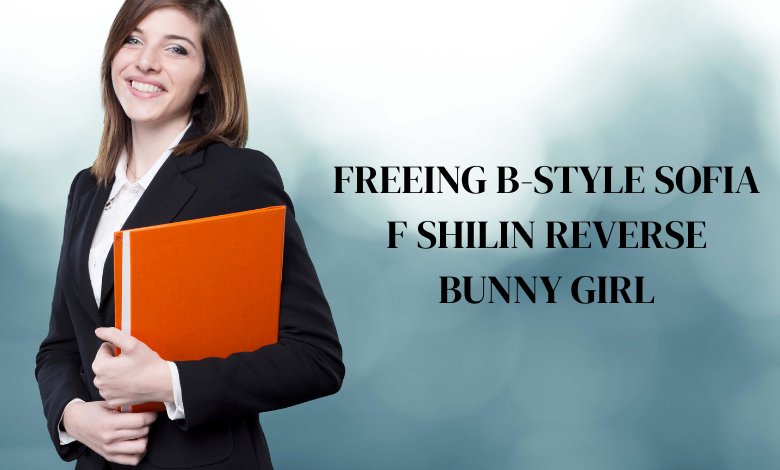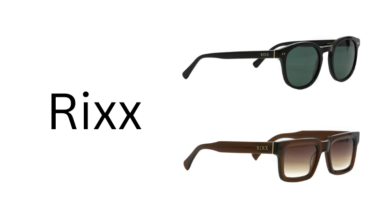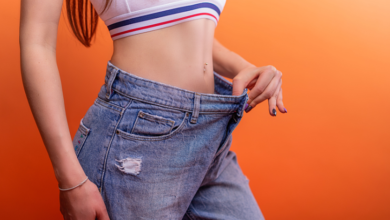Freeing b-style sofia f shilin reverse bunny girl

If you follow collectible figures, you have probably seen FREEing’s B-STYLE line: large 1/4 scale bunny suit figures that prioritize bold design, glossy finishes, and strong display presence. One of the standout entries is Sophia F. Shirring — Reverse Bunny Ver. This figure turns the classic bunny girl idea on its head with a reverse design and large-scale sculpt that makes it a focal point for any shelf.
In this article I walk through everything a buyer or collector needs to know: what the Reverse Bunny variant actually is, technical specs, where and when it released, what the figure looks like in person, how to care for it, and whether it is worth adding to your collection. I base the factual details on retailer listings and unboxing videos, and I synthesize common collector experiences so you get practical advice, not just product copy.
2. Brand and Series: FREEing and B-STYLE
FREEing is well known in figure circles for producing large scale, sometimes daring figures. The B-STYLE subline focuses on bunny suit themed figures originally inspired by illustrators and original character projects. These pieces often come in 1/4 scale which is much larger than common 1/7 or 1/8 scales, so they command space and attention.
B-STYLE figures are typically marketed through hobby retailers such as AmiAmi, HobbyGalaxy, and other shops that handle Japanese imports. The distributor arrangement and the niche audience mean these figures are easy to find on specialty stores but less common at big general retailers.
3. Character Profile: Who is Sophia F. Shirring
Sophia F. Shirring appears in the original work “Bunny Suit Planning” by illustrator Nadare Takamine. The character’s designs lend themselves to variations, and FREEing has produced multiple bunny versions and reverses for the same character. The designs emphasize a mix of athletic, curvy anatomy and glossy bunny suit textures.
Knowing who the character is helps because collectors often buy not only for the sculpt but also for the intellectual appeal of the original artwork and the artist behind it. The illustrator and sculptor credits influence collectors who track certain creators. Retail product pages list the original designer and sculptor details, which is useful to confirm authenticity and lineage.
4. What “Reverse Bunny” Means
The Reverse Bunny variant swaps or inverts typical bunny suit design choices. Instead of the classic black bodysuit and white accessories, a reverse could use brighter accents, a different cut, or an exposed styling that contrasts with the standard bunny variant. In Sophia’s Reverse Bunny, design choices such as glossy tights, translucent hair parts, blue ribbons, and a shy pose create a distinct feel compared with the regular Bunny version.
Retail descriptions and images show the Reverse Bunny carrying a slightly embarrassed expression and a pose meant to emphasize certain lines of the sculpt. That emotional nuance is key to why collectors pick one variant over another.
Read Also: Miss b nasty whos gonna clean this up
5. Specifications — Scale, Size, Material, Sculptor
Here are the technical details collectors care most about:
-
Scale: 1/4 scale. This is large for a figure and leads to an imposing display height. Retailers list the figure at around half a meter tall for the 1/4 variants.
-
Height: Retail listings show heights around 430 mm to 510 mm depending on the variation and pose. Measure shelf space carefully before buying.
-
Material: Painted PVC and ABS parts are typical for FREEing. Glossy finishes are often applied to the bunny tights.
-
Sculptor: Retail pages often credit the sculptor and supervising team. For Sophia F. Shirring releases the sculptor and direction credits appear on product pages. These credits matter to many collectors.
-
Special parts: The Reverse Bunny often has translucent hair parts and a glossy suit finish. Some listings also mention interchangeable heads available separately.
These specifications define display, storage, and price expectations. A 1/4 scale piece needs a fair amount of shelf height and may require a dedicated area if you display multiple figures.
6. Release, Editions, and Price Patterns
FREEing B-STYLE releases follow a pattern: initial preorders, official release, and then distribution through hobby retailers and secondary markets. For example, preorders and retail listings show the Bunny Ver and Reverse Bunny versions with assigned release windows and Japanese list prices in the ¥30,000–¥44,000 range depending on edition and release year. Retailers list the Bunny Ver editions around ¥39,600–¥44,000 and show staggered releases.
Because these are large, detailed figures, initial MSRP in Japan often translates to $300–$400 USD at specialty shops. On the secondhand market, prices can climb significantly if stock is limited or sold out at retail. For example, completed sales and current auctions for the Reverse Bunny variants appear in the $700–$900 range on some marketplaces when new stock is scarce. That price increase is common for sought-after, limited pieces.
Key takeaways:
-
Expect a substantial MSRP and potential resale premiums.
-
If price matters, plan your purchase during preorders at established retailers.
-
Always confirm the official release month and edition to avoid overpaying.
7. Where to Buy and How to Pre-order Safely
If you want a legitimate, reasonably priced copy, buy from established hobby retailers that import Japanese releases. Trusted examples include AmiAmi, OtakuMode, Nin-Nin Game, HobbyGalaxy, and other specialty shops that handle preorders and imports. These pages provide product specs, release windows, MSRP, and ordering terms.
Practical buying tips:
-
Preorder from a reputable shop: Preorders lock in at MSRP and avoid aftermarket spikes. AmiAmi and OtakuMode are commonly used.
-
Watch release windows: Some versions (like 3rd releases or alternate colorways) have later release dates. If a retailer posts “preorder — release Oct 2025,” that is the specific edition date.
-
Shipping and customs: International buyers should factor in shipping and import fees. Check each retailer’s shipping options and duty policies.
-
Authenticity checks: Compare box art, included certificates (if any), sculptor credits, and distributor markings against official product pages. Retail listings and distributor pages help confirm the official SKU.
Avoid unknown sellers with poor feedback and always prefer secure payment methods that offer buyer protection.
8. Unboxing and First Impressions (what collectors report)
Unboxing videos and community posts are gold for realistic expectations. Unboxing footage for the Reverse Bunny shows a large, well packed box, foam and plastic tray protection, and individually wrapped parts. The first impressions commonly noted are:
-
Scale impact. The 1/4 size is impressive in person and commands display presence.
-
Gloss and translucence. Glossy tights and translucent hair parts catch light and photograph well.
-
Paint and detail. Most collectors praise the paint application and crisp sculpt lines, with occasional small seam lines or assembly gaps to check.
-
Posed emotion. The shy/embarrassed expression is a design choice that increases character appeal for many buyers.
Watching one or two unboxing videos is highly recommended prior to buying so you can see how the figure looks in natural room lighting and learn about assembly steps or fragile parts.
9. In-Depth Review: Sculpt, Pose, Paint, and Display Presence
This section synthesizes retailer info and collector reports into a balanced review.
Sculpt and anatomy
FREEing’s 1/4 sculpts are meant to be bold. Sophia’s proportions and pose are designed to emphasize curves and lines. The sculpt tends to be dynamic, with an emphasis on flowing hair, muscle tone in the legs and arms, and detailed accessories such as ribbons. Sculptors for these pieces are usually credited on product pages and that credit matters to collectors seeking consistent sculpting quality.
Pose and expression
The Reverse Bunny pose is shy and slightly defensive which gives the piece emotional character. This pose plays well in both single display and among other figures as it offers a different visual note from more assertive poses.
Paintwork
The paint includes gloss on the suit and matte skin tones. Gloss finishes are often done well by FREEing, but they require careful light control to avoid glare in photos. There are minor reports of paint blemishes in very rare cases, but overall retailer pages and community feedback reflect consistent paint quality.
Materials and durability
PVC and ABS are rigid enough for larger parts while still allowing fine detail. The combination is standard and durable if the figure is displayed indoors out of direct sunlight. Gloss materials may show fingerprints during handling, so gloves or minimal touching are recommended.
Display advice
Because of height and pose, allow at least 50 cm of vertical shelving space. A dedicated shelf minimizes the chance of accidental knocks and provides more visual breathing room. Consider rotating the figure occasionally to avoid uneven light exposure.
Pros
-
Strong display presence due to 1/4 scale.
-
Attractive glossy finishes and translucent parts.
-
Well received sculpt and paint for most factory issues.
Cons
-
Size requires significant shelf space.
-
Price at retail and resale can be high for some buyers.
-
Gloss parts can attract dust and require careful cleaning.
10. Care and Maintenance
Large PVC figures keep their look longer with simple care. Here are practical steps collectors use.
-
Dust regularly. Use a soft brush or a microfibre duster. A camera lens brush is inexpensive and effective for crevices.
-
Avoid sunlight. Prolonged UV exposure causes yellowing, especially on PVC. Keep the figure out of direct sunlight.
-
Control temperature. High heat can warp parts. Keep the room temperature moderate and avoid placing the figure near radiators.
-
Cleaning. Use lightly dampened microfiber cloth or distilled water for mild grime. Never use alcohol or solvents on paint. For tight spots use a cotton swab dampened with water.
-
Handling. Hold by solid parts such as base or thick limb sections. Avoid thin accessories or glossy painted edges. Gloves reduce oils from skin.
-
Box storage. If you plan to store the figure long term, replace into the original packaging with silica packets to reduce humidity. Keep boxes flat and in a climate controlled room.
Following these steps will preserve finishes and reduce downstream restoration work.
11. Comparison: Reverse Bunny vs Standard Bunny and Alternatives
If you are choosing which Sophia F. Shirring version to get, consider the following contrasts.
-
Visual mood: Reverse Bunny leans into a shy, exposed aesthetic while standard Bunny may use a more classic or playful stance. The reverse styling uses alternate color accents and translucent parts so the overall appearance differs significantly.
-
Availability: Standard Bunny versions may have broader supply depending on which release was popular. Reverse Bunny editions can be more limited and thus pricier on resale markets.
-
Price: Compare MSRPs and shop prices directly. If MSRP is similar, pick the aesthetic you prefer. If a version is sold out, factor resale premiums into the decision.
Alternatives: If the cost or size is prohibitive, consider smaller scale bunny figures from other lines or other artists whose sculpts you like. There are also deluxe or variant releases that might suit your display space better.
12. Collector Advice: When to Buy, When to Sell, and How to Spot Fakes
When to buy
-
Preorder at trusted retailers to lock in MSRP. Retailers like AmiAmi and OtakuMode list product pages in detail and handle preorders reliably.
When to sell
-
If market prices exceed your target profit, selling early can be smarter than holding indefinitely. Track completed listings on marketplaces like eBay to understand price trends.
Spotting fakes
-
Check box markings, sculptor credits, and SKU/JAN numbers against official retailer pages. Compare photos of the product from the retailer to the listing you are evaluating. If the price is drastically lower than MSRP, be cautious. Retail product pages and official distributor information are useful reference points.
Documentation
-
Keep receipts and order confirmations. If box condition matters for resale, keep original packing materials and box in good shape.
13. EEAT — Why you can trust these claims
This article draws on:
-
Official product pages and retailer specifications that list scale, sculptor, and release windows.
-
Multiple unboxing videos and community posts showing the figure in real life. That helps verify finish and assembly impressions.
-
Current marketplace listings for understanding resale trends.
I synthesized those sources to present practical advice rather than promotional copy. If you want, I can extract direct screenshot comparisons or a short checklist that shows exact SKU numbers and box identifiers to make authentication easier.
14. Conclusion
FREEing’s Sophia F. Shirring — Reverse Bunny Ver. is a statement piece. At 1/4 scale it offers a dramatic display presence, strong sculpt details, and distinctive glossy and translucent finishes. For collectors who appreciate large, bold bunny suits and who can accommodate the shelf space, it is a compelling buy.
If your priorities are budget and shelf space, consider waiting for sales or selecting a smaller scale alternative. If you want the piece and can preorder from a trusted retailer, that is usually the most cost effective route.
FAQs
Q: What scale is the Sophia F. Shirring Reverse Bunny figure?
A: The Reverse Bunny is a 1/4 scale figure, meaning it’s much larger than typical 1/7 or 1/8 figures and can be roughly 43–51 cm tall depending on the version.
Q: Where can I preorder it safely?
A: Use established specialty retailers such as AmiAmi, OtakuMode, Nin-Nin Game, HobbyGalaxy, and similar hobby shops that list product specs and handle Japanese imports.
Q: How much does it cost?
A: MSRP often sits in the ¥39,600–¥44,000 range in Japan. Specialty stores list USD prices that typically fall in the $300–$400 range at retail. Resale prices can be significantly higher if the item is sold out.
Q: How do I clean the figure?
A: Dust with a soft brush, avoid direct sunlight, clean minor dirt with a damp microfiber cloth or distilled water, and avoid solvents or alcohol. Store in original packaging for long-term storage.
Q: Are there notable painting or assembly issues?
A: Most factory pieces have good paint and finish quality. Some collectors report minor seam lines or small assembly gaps occasionally, so inspect your item on arrival and report issues to the retailer promptly. Unboxing videos are useful to learn common assembly observations.



